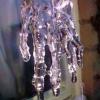Search the Community
Showing results for tags 'tricks'.
-
Hi folks, I am looking for a Rob Caggiano Sound ....its so fat an creamy ....cant find the right words. Any Ideas, Tipps or Patches to share? I tried to model it for months ... get some good Sounds .. but it´s not similiar to his sound Thx for your support
-
Been thinking about this for a while, how great it would be to offer some tips and tricks on programming HELIX presets to help them sound better and improve tones, and how delightfully wonderful to have things in the same thread to find. While I am not an established veteran of the HELIX "yet", I have discovered a few things that might be useful to others in this rather infinite magic forest of param variability regarding what I consider the best inventive progress in amp modeling since the whole ballgame began. So please anyone who would like to offer some idea or something they discovered which makes things sound better please add to the list or perhaps extend upon an idea to further flush out its potential. I have long wanted to find and read of such advanced user tips and wish Freman and others who sell presets, while not giving away the farm might develop a better advanced user programming guide of tips for the HELIX. SO offer up what you think might be of use, it does not matter if others know of it already, I guarantee there are many who will not have known of it: So to start off I offer a few things I learned or perhaps heard of someone else doing, so this is not about taking credit for anything as I have no idea of all the things discussed here on the forum or even in videos regarding the mighty HELIX. 1.) Make use of the MIC section PREAMP model of the Studio Tube Preamp model. Set the model to line sensitivity or "impedance" put the level of this on 10 and the gain right around 4.0. You can put this block in front of clean or dirt amp models which imparts a rather subtle but cool tube-ish enhancement model to make things sound a little more "not" digital or sterile. I find it extremely good after a high gain amp to increase and enhance the quality of the gain structure and intensity. I often place the "after" block before any separate speaker IR block but there is no notion it does not help after a full amp as well. Anyway cool trick I have taken to using and I often assign a switch to both Studio Preamps on merge/"multiple" to either shut both on or off or switch from one to the other. 2.) While not an unknown or surprise finding, using the Cali EQ block which is really Mesa's V EQ curve from their amps makes any high gain amp model sound so much better by notching the lower mid 750hz and bringing up the lows and highs in a V shape. One should not boost or cut too much but it for sure makes a high gain sound better and often on my cleaner models I like the tone balance. Of course EQ is always a matter of personal taste and case of point use but Mesa puts this V Graphic EQ on all their main amps as it just sounds wicked cool. Note:If you use the post Studio Tube Preamp #1 trick above, I suggest putting the Cali V EQ after the Tube preamp model as it is easily over driven which may not be a good sound for you. When I use the Studio Tube thing I just want a subtle tube quality into the sound structure. 3.) I find it essential for me when I run an external effects loop I need to have a NR gate block on after the loop return which keeps things quiet even though I use several high end external pedals. Of course slapping in a basic NR gate block after any hissy amp shunts off that annoying hiss without seeming to effect the overall sound dynamic or attack. I tend to use the stock default settings but others my have some better ideas for param adjustments. So I hope this prompts the witty higher end users to toss a few ideas and tips which could get quite insightful.
- 60 replies
-
- 6
-

-
- presetsprogramming
- tips
-
(and 2 more)
Tagged with:
-
There are a lot of promotional videos from Line6, and they all sound much better than any preset I created with my new Helix. Jack Thammarat e. g. shows how to create a lead tone for Helix: I reproduced everything like shown in this video, I also used an Fender Stratocaster – but my patch sounds not as good as in the video. Much less brilliant and not as much like an tube amp in this video. Well, Jack Thammarat wrote he recorded the sound directly via USB … I can't believe it. Are there any tricks to get my guitar and Helix sound better? Preamps? Post production? Other things? Has anyone any suggestions? Ulf

